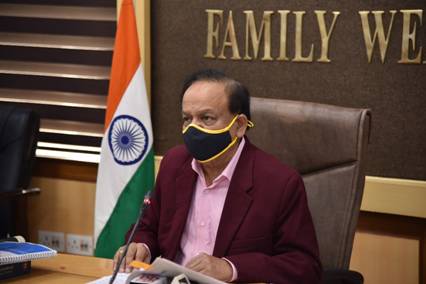
DELHI: The National Family Health Survey 5 (NFHS-5) report was released by Mansukh Mandaviya, Minister of Health, Government of India on Thursday, May 5, at ‘Swasthya Chintan Shivir’ beingheld in Gujarat.
It includes detailed information on various parameters of population, fertility and family planning, infant and child mortality, maternal and child health, nutrition and anaemia, morbidity and healthcare, women’s empowerment etc. New parameters like death registration, pre-school education, expanded domains of child immunisation, components of micro-nutrients to children, menstrual hygiene, frequency of alcohol and tobacco use, additional components of non-communicable diseases (NCDs), etc were added in NHFS-5 which weren’t covered by NFHS-4.
The latest survey report shows that there’s general progress in the direction of achieving SDGs across all states and UTs.
Participation of married women in household decision-making is high (from 80 per cent in Ladakh to 99 per cent in Nagaland and Mizoram), considering three indicators- health care for herself, making major household purchases, visit to her family or relatives. According to the Health Ministry, the percentage of women having a bank or savings account that they use has increased from 53 to 79 per cent in the last 4 years.
According to the report, stunting among children has gone down in the last four years (from 38 to 36 per cent). There’s also a rural-urban disparity here; stunting is more prevalent in rural areas (37 per cent) than urban areas (30 per cent). Obesity, on the other hand, has increased since NFHS-4.
The survey was conducted in around 6.37 lakh sample households, including 707 districts across the country, covering 7,24,115 women and 1,01,839 men to provide dis-aggregated estimates up to district level.

